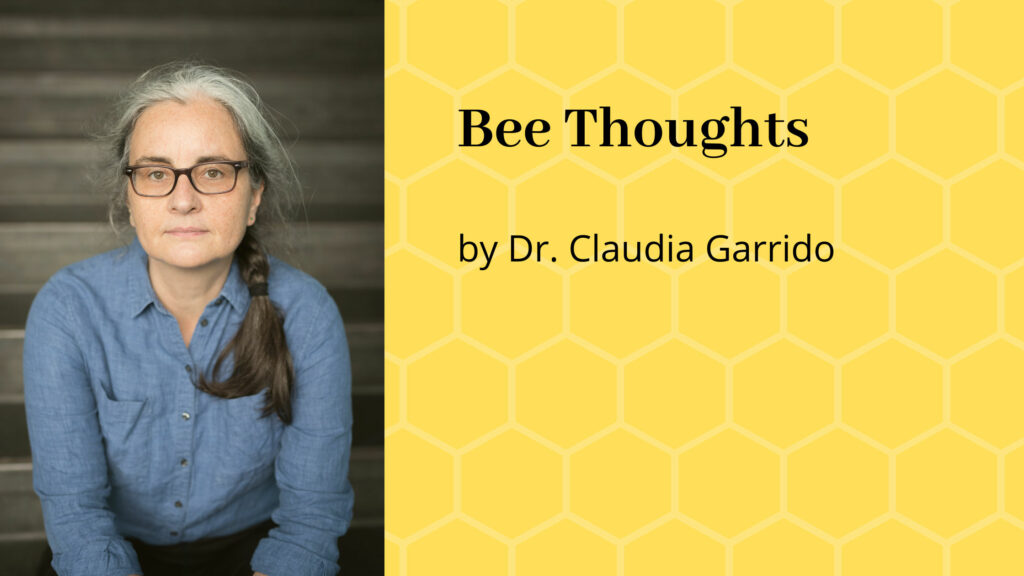Beginning of this year, the news of large colony losses in the USA hit hard. The tone of the posts and articles I saw about this was familiar: It was very similar to what I heard and read in 2008, when the Colony Collapse Disorder (CCD) was described for the first time. It was also the time when the problems with neonicotinoids came up and bees became so popular that everyone wanted to “save” them. With all positives and negatives.
After 17 years, there’s again this terrible news: More than 60% of the colonies in professional operations lost. Representing 1.7 million colonies. Let that sink in… I’m imagining the beekeepers going from colony to colony for controlling them and finding so many of them dead. It was shortly before almond bloom, in January 2025. So, together with the shock about so many dead animals, there was also an existential fear. Losing so many colonies also means not being able to provide pollination services – i.e. losing a main source of income .
The causes of the large colony losses in the USA
Obviously, the search for causes started immediately. Scientists from the USDA Agricultural Research Service (ARS) inspected the operations, took samples, analysed them… all those things scientists do. They also did a great job in taking samples from colonies that were collapsing in that moment. And they came up with an explanation, published as pre-print to make it accessible as fast as possible. Great job, this is how things have to be done.
The results themselves weren’t a big surprise, though: Unusually high levels of viruses, mainly DWV and ABPV. Both linked to varroa. So, the cause was the “varroa-virus-complex”, as it’s called in the German Bee Monitoring. It’s the main cause we find also in other parts of the world. The numbers in the US were unusual and especially spectacular. But that, in the end, doesn’t matter. Large colony losses have an impact – both emotionally and financially as the paper rightly states – and that’s independent of how many colonies a beekeeper has. The cause is a qualitative description (high levels of viruses), not a quantitative one (number of lost colonies).
And some overinterpretation
Until this point, the paper and the work behind it was good – solid research and results. But then there was a point I only thought “What?!”. As the viruses that made the colonies collapse are linked to varroa, they screened for resistance for amitraz. Per se, this is legitimate: amitraz is used predominantly as a varroa treatment in the States. The high virus levels also indicate high varroa infestation (which is also reported in the paper, by the way). So, if beekeepers treated, it’s a logical thing to ask why these treatments didn’t work. Resistance is ONE possible answer. Others could be:
- Wrong timing
- Wrong dose
- Wrong application (self-made patties, for instance)
These weren’t considered. OK, let’s give beekeepers the grace that everything went right. But here’s the huge methodological mistake: These analyses were done on 39 mites. Thirty-nine. These were taken from 18 colonies in five operations. So, a mean of 2.2 mites per colony or 7.8 mites per operation. I dare say that they could have easily got 39 mites from each colony they sampled. So, dear colleagues, if this is a typo in the pre-print, please correct that ASAP! If it was 390 my following criticism isn’t irrelevant, but not as strong.
Why this matters
You may be wondering why this is important. Well, because of what is made of this in public. A foundation of 39 mites doesn’t justify a sentence like in the press release of USDA-ARS:
“Since the viruses are known to be spread by parasitic Varroa destructor (Varroa) mites, ARS scientists screened the mites from collapsed colonies and found signs of resistance to amitraz, a critical miticide used widely by beekeepers. This miticide resistance was found in virtually all collected Varroa, underscoring the need for new parasitic treatment strategies.”
One of the first things you learn as a scientist is that sample size matters. It has to be representative of the reality you’re describing. The larger the sample size, the more variation you will see. In this case, if they’d had sampled only one more mite, this maybe wouldn’t have shown the mutation the scientists associate with resistance. Like when you throw a coin: The more often you do this, the more you will see both sides of the coin. Until it’s a 50/50 relationship. The sample size, 39 mites, definitely isn’t representative of the thousands of mites present in those sampled colonies.
This matters also for the greater public, because they have to trust their institutions and researchers. The USDA is an authority, what they say has authority. In times of misinformation and conspiracy theories, the responsibility we have as scientists even increases.
Consequences for practical beekeeping
This isn’t just an academic critique. It has implications for practical beekeeping, too. If scientists don’t work accurately, their conclusions aren’t reliable. So, yes, maybe there’s increasing resistance against amitraz. Wouldn’t surprise me that much. But just calling for new treatment strategies falls too short. Because resistance doesn’t come out of nowhere. It comes from incorrect use of a medicine. To be clear: I’m not blaming beekeepers. If nobody teaches them, they can’t know these things.
Reading this paper I thought of something a colleague from the US said at the COLOSS meeting last November. That beekeepers used a single substance until there was resistance. This is mentioned in the USDA paper, too, it mentions that coumaphos and fluvalinate became inefficient and that’s why beekeepers were widely relying on amitraz for varroa treatments. So, we had the case of making substances useless already!
This shows that just developing new varroacides won’t help. They’ll just do the same over and over again. Beekeepers themselves see this. In a statement of Project Apis m., Patty Sundberg (President of the American Beekeeping Federation) says:
“We can’t continue relying on a single line of defence against Varroa.”
Exactly. You have to rotate treatments and use them at the correct dose and correct time. This means teaching beekeepers to do so. Especially those who rely on beekeeping for a living. And beekeepers have to recognize that their actions sometimes worsen the situation. As I said, I’m not blaming. But good practices means learning from your mistakes and not making them over and over again. Just calling for new treatments won’t avoid large colony losses like this year. You have to go to the roots of the problem. The education.
So what’s next?
In the same statement, there’s already a first step to go: They link a guide for commercial beekeepers on how to control varroa. So, that helps. Teaching how things are done and why it matters. A guide alone, obviously, isn’t enough. It’s a first step. It also needs practical training and many, many repetitions in different formats. To reach as many as possible. If you want an introduction, I may mention my varroa series from December 23/January 24, which starts with what to know about varroa treatments. The series includes also some rules to make sure varroa treatments work and so much more. It may be a good starting point.
The key is to establish good practice. And the awareness that it’s a process, not a task or a state of being. It’s about education, continuously learning. Only then new varroa treatment strategies will have sustainable success – instead of repeating the same story of large colony losses over and over again.


